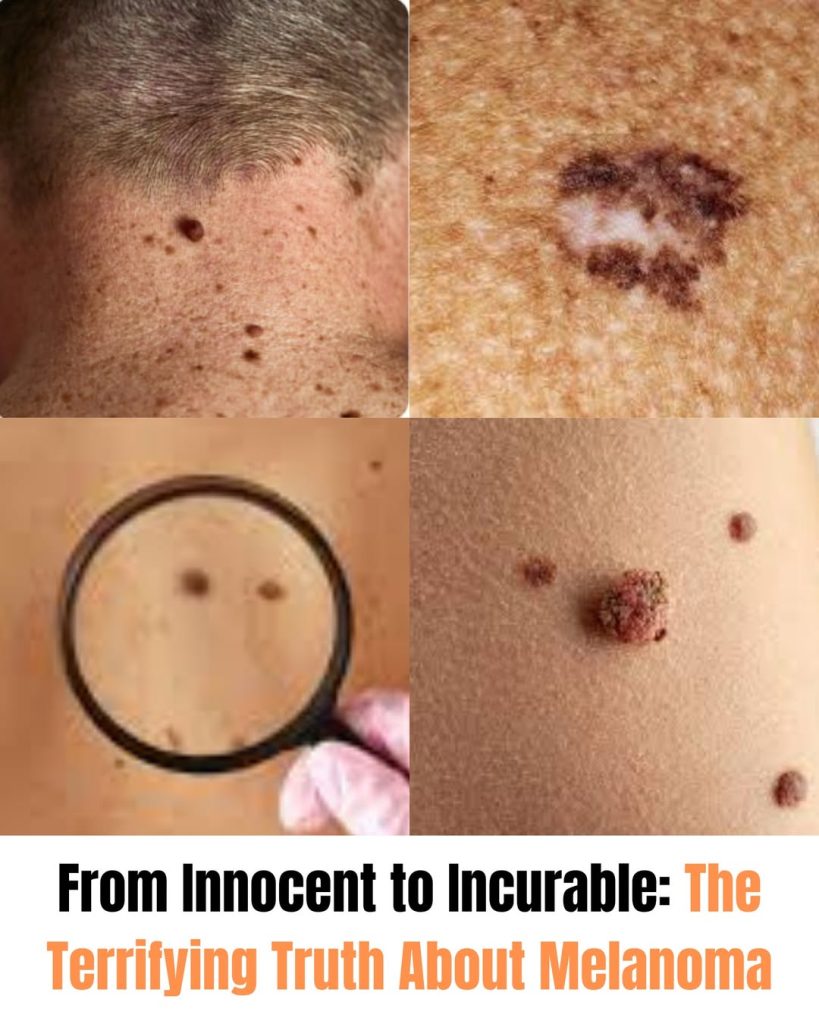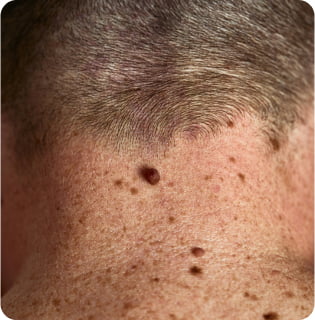
Melanoma is one of the most serious types of skin cancer. It begins in melanocytes—the cells that produce melanin, the pigment responsible for coloring your skin, hair, and eyes. Although it’s not as common as other skin cancers, melanoma tends to grow faster and spread more easily, which makes spotting it early absolutely crucial.
Spotting the Warning Signs
Melanoma can start either on normal skin or develop from an existing mole. One of the biggest red flags is a mole that changes in appearance or a brand-new spot that suddenly appears.
To help people catch melanoma early, dermatologists often use something called the ABCDE rule:
- A – Asymmetry: One half of the mole doesn’t mirror the other.
- B – Border: The edges are uneven—maybe jagged, blurry, or irregular.
- C – Color: The color varies and might include different shades like brown, black, red, pink, white, or even blue.
- D – Diameter: The spot is larger than 6 mm (about the size of a pencil eraser)—though some melanomas are smaller.
- E – Evolving: Any noticeable change in a mole—whether it’s growing, changing shape or color, or starts itching or bleeding—can be a warning sign.
Melanoma doesn’t always show up in obvious places. It can appear under fingernails or toenails, on your palms or soles, and even inside the mouth or eyes. If a mole stands out from the rest—sometimes called the “ugly duckling”—it’s time to get it checked.

What Causes Melanoma?
Melanoma starts when mutations occur in the DNA of melanocytes, causing them to grow out of control. Several things can raise your risk:
- UV exposure: This is the biggest factor, especially from too much sun or using tanning beds.
- Fair skin: People with lighter skin, blue or green eyes, and blonde or red hair have less melanin and are more vulnerable.
- Sunburns: Severe or blistering sunburns, especially during childhood or adolescence, can increase risk.
- Family history: If close relatives have had melanoma, your risk goes up.
- Past skin cancer: If you’ve had melanoma or another skin cancer before, recurrence is more likely.
- Lots of moles or unusual moles: Particularly large or irregular ones, called dysplastic nevi, are a concern.
- Weakened immune system: Whether from a health condition or medication (like after an organ transplant), a weaker immune system raises the risk.
- Genetics: Inherited gene mutations—especially in genes like CDKN2A or BRAF—can play a role.
While melanoma is more common in people over 50, it can affect younger individuals too. Men are slightly more likely than women to get it, and it’s especially widespread in places with strong UV rays—think Australia and New Zealand.

How Is Melanoma Diagnosed?
If a mole or skin spot looks concerning, a dermatologist will usually do a few things:
- Visual check: They’ll use a special device called a dermatoscope to closely inspect the spot.
- Skin biopsy: This is the only way to confirm melanoma. A sample of the skin is taken and looked at under a microscope.
- Histopathology: This analysis looks at key features of the tumor, such as:
– Breslow thickness (how deep the tumor is),
– Whether there’s ulceration,
– The mitotic rate, or how fast cells are dividing.
If advanced melanoma is suspected, imaging tests might be needed:
- Ultrasound or CT scans: To see if nearby lymph nodes or organs are affected.
- PET or MRI scans: These help detect spread to distant organs.
- Sentinel lymph node biopsy: A surgical test to see if cancer has reached nearby lymph nodes.
Stages of Melanoma
Melanoma is staged from Stage 0 (very early) to Stage IV (advanced), depending on how far it has spread.
- Stage 0 (in situ): The cancer is only in the top skin layer. Very treatable with surgery.
- Stage I–II: The tumor is thicker and possibly ulcerated, but hasn’t spread. Risk rises with size and depth.
- Stage III: The cancer has reached nearby lymph nodes or skin.
- Stage IV: It has spread to distant organs—like the lungs, liver, brain, or other parts of the skin.
Doctors use a system called AJCC TNM to describe melanoma:
- T = Tumor (size and depth)
- N = Node (lymph node involvement)
- M = Metastasis (spread to distant parts of the body)
Melanoma Prognosis
Your outlook depends a lot on how early the melanoma is found:
- Stage 0 & I: Great outcomes—over 90–99% 5-year survival rate.
- Stage II: Still treatable, but survival drops to around 70–85%.
- Stage III: Moderate prognosis, with survival rates between 40–78%, depending on how many lymph nodes are affected.
- Stage IV: More serious, but thanks to newer treatments like immunotherapy and targeted drugs, some people are now living much longer and even achieving remission.

Prevention & Early Detection Tips
Melanoma may be aggressive, but it’s also one of the most preventable cancers. Here’s how to reduce your risk:
- Stay out of the sun during peak hours (10 a.m. to 4 p.m.).
- Wear hats, long sleeves, and sunglasses.
- Use sunscreen (SPF 30 or higher), and reapply every two hours.
- Avoid tanning beds.
- Do regular self-checks—use mirrors to look over your whole body once a month.
- See a dermatologist regularly, especially if you’re high-risk.